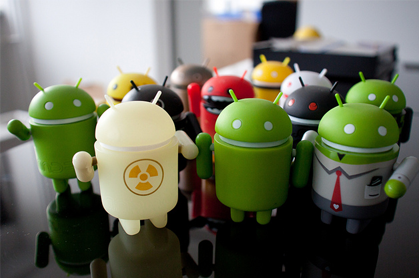This article is more than 1 year old
El Reg's Giant Mobile Industry Roundup of 2014
iPhone-gasms, a Wintel for phones and more...
Super Saturation
In mature Western markets, punch-drunk manufacturers are haemorrhaging red ink as buyers become pickier, looking for more value. That means the high-investment, big budget model looks increasingly difficult to sustain. And in a future where Huawei and Xiaomi have cost advantages, why stay in it at all? Only Samsung has proven it has the brand and clout to come close to matching Apple in the £40/month contract end of the market, and Samsung has become very complacent in recent years.
Sony took two swings at the market (bringing out two Xperia ranges) but posted a £1.1bn loss and appointed a new mobile chief. HTC ended up a third smaller than a year ago, but after a near-death scare last year, cut its costs to match – it’s just about breaking even. If only HTC could convert rav reviews (for its stylish One M8) into huge sales.
But Samsung, which had bought market share at great expense, had the furthest to fall. Like HTC, its sales fell by a third year on year, while it continues to buy its market presence thanks to an astronomical marketing budget. The pimply-faced youth trying to sell you one may or may not be an authentic Samsung fan – but he’ll be on sales incentives nobody else can afford to match. That said, I only ever meet happy Samsung S5 owners – the camera and display are superb – so rather than trying to retain margins (which is what Samsung promised analysts) it should try to control its costs.
A Wintel for phones?
The problem for all today’s Tier 1 Android vendors is that Google has seen the future – and they’re not in it. Google’s Silver programme prepared the market for a commoditised, post Big OEM future – one in which “Silver” became the premium brand. Silver would be Wintel for phones. Network operators liked the sound of it (naturally) but (equally naturally) the OEMs reacted furiously at being pointed towards the glue factory, and the plan was sidelined.
Perhaps Google’s right – it’s just too early. In five years' time I’d bet most of our phones will be Silver phones – with a tiny drop of Xiomi or Huawei branding. (For more on the Chinese invasion – see below). Or perhaps OEMs will do what Nokia – the old Nokia, that is – is <a href="https://www.theregister.com/2014/11/18/nokia_android_tablet_n1_ipad_rival/" experimenting with. License the brand and IP, and let Foxconn do the rest.
Paranoid Android
By summer, Android had largely shaken off its reputation for laggy and unpredictable performance thanks to a sustained engineering effort by Google. With complementary wearables set for Xmas shopping season launch, an ART runtime and a visual makeover due for the 5.0 release, all seemed set fair. What’s gone wrong?
Well, Android has been so well run perhaps it was due a slip. Reports of the Lollipop update being buggy abound - while the flat, fashionable makeover is too stark and dogmatic for some. (The 5.0 task switcher makes task switching harder – pure and simple). The Android Wear watches are expensive and power guzzling - was it really necessary for Google to put a second smartphone on your wrist?
(By contrast, the less ambitious Pebble looks to have got most things right).
A year ago CyanogenMod received investment from Andreessen Horowitz, and was worth watching as a potential platform. Google was worried enough to try to buy it. But it got exactly nowhere in 2014, and made the really bizarre decision to license itself exclusively to one manufacturer in India – which is not a recipe for success.
Android’s biggest problem in 2015 won’t be Apple, but competition authorities. And strategy, policy and regulatory issues are increasingly defining the landscape. I’ll deal with these in another story.
But what about the rest? You remember, Microsoft and BlackBerry? Look for part two of our roundup tomorrow. ®

